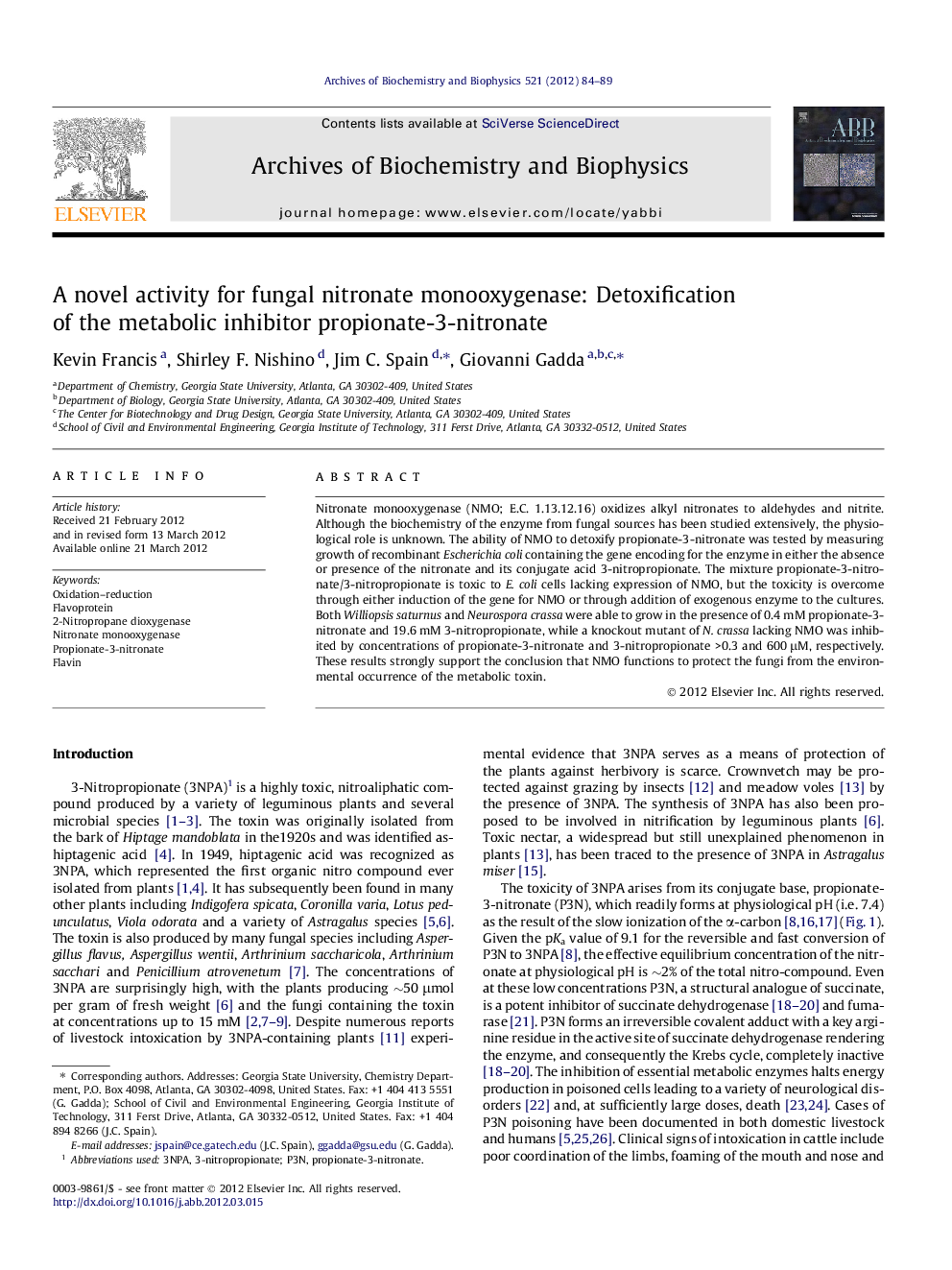| Article ID | Journal | Published Year | Pages | File Type |
|---|---|---|---|---|
| 1925572 | Archives of Biochemistry and Biophysics | 2012 | 6 Pages |
Nitronate monooxygenase (NMO; E.C. 1.13.12.16) oxidizes alkyl nitronates to aldehydes and nitrite. Although the biochemistry of the enzyme from fungal sources has been studied extensively, the physiological role is unknown. The ability of NMO to detoxify propionate-3-nitronate was tested by measuring growth of recombinant Escherichia coli containing the gene encoding for the enzyme in either the absence or presence of the nitronate and its conjugate acid 3-nitropropionate. The mixture propionate-3-nitronate/3-nitropropionate is toxic to E. coli cells lacking expression of NMO, but the toxicity is overcome through either induction of the gene for NMO or through addition of exogenous enzyme to the cultures. Both Williopsis saturnus and Neurospora crassa were able to grow in the presence of 0.4 mM propionate-3-nitronate and 19.6 mM 3-nitropropionate, while a knockout mutant of N. crassa lacking NMO was inhibited by concentrations of propionate-3-nitronate and 3-nitropropionate >0.3 and 600 μM, respectively. These results strongly support the conclusion that NMO functions to protect the fungi from the environmental occurrence of the metabolic toxin.
Graphical abstractFigure optionsDownload full-size imageDownload high-quality image (38 K)Download as PowerPoint slideHighlights► The physiological role of fungal NMO has remained elusive for 60 years. ► NMO shows the highest specificity for the natural toxin propionate-3-nitronate. ► Propionate-3-nitronate prevents growth of bacteria and fungi. ► NMO protects bacteria and fungi against propionate-3-nitronate. ► A function for over 3000 genes related to NMO is proposed.
